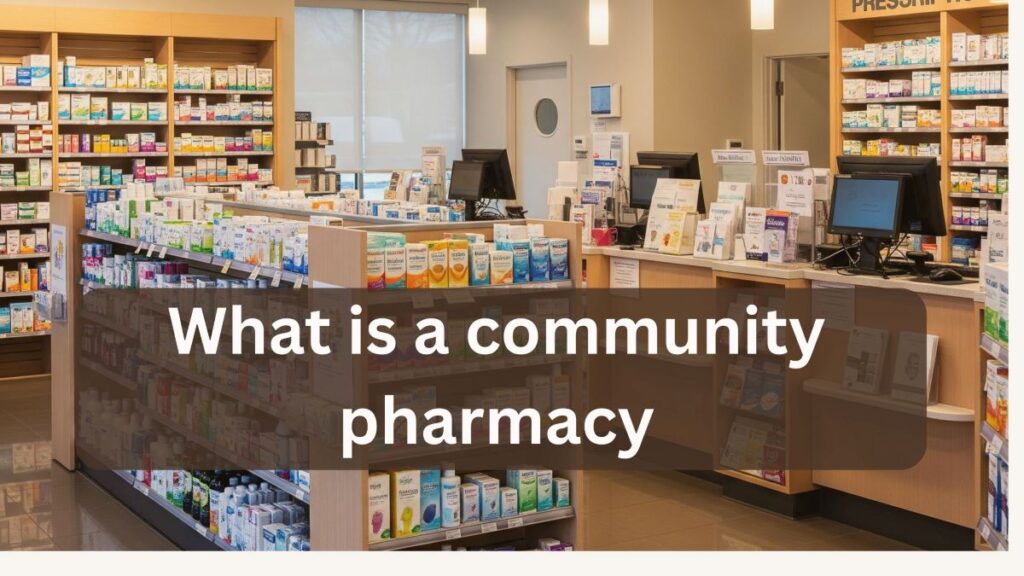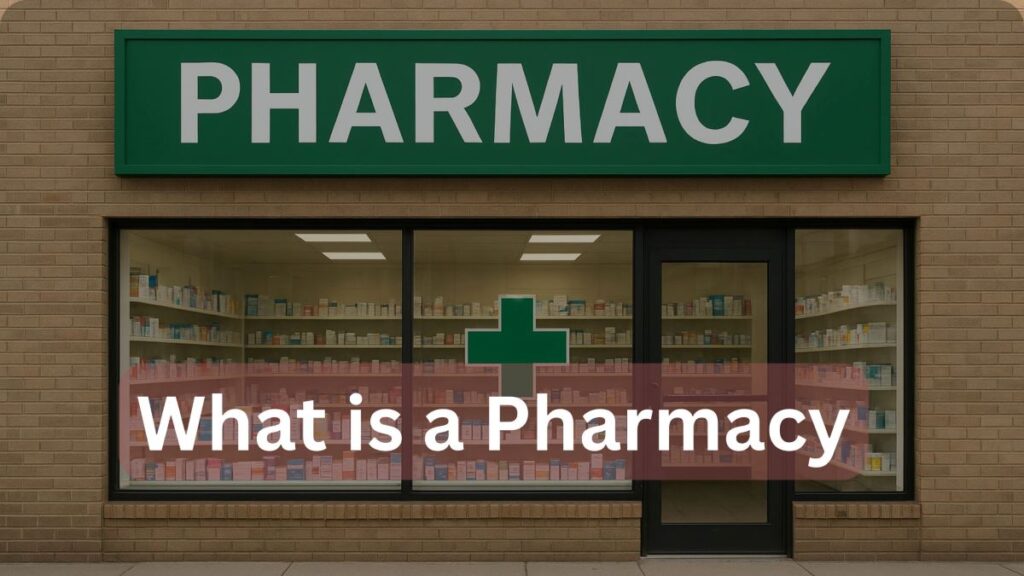Community pharmacy, often referred to as a retail pharmacy, is a vital component of the healthcare system, serving as the first point of contact for many seeking medical advice, medications, and health-related services. These pharmacies are typically located in neighborhoods, markets, or urban centers, making them easily accessible to the public. In this article we can explain what is a community pharmacy, various functions of community pharmacy and a short history of community pharmacy.
Understanding Community Pharmacy
A community pharmacy is a healthcare facility where licensed pharmacists dispense prescription and over-the-counter (OTC) medications, provide health advice, and offer a range of health-related services. Unlike hospital pharmacies, which primarily serve inpatients, community pharmacies cater to the general public, addressing their day-to-day healthcare needs.
Community pharmacists are highly trained professionals who not only dispense medications but also educate patients on their proper use, potential side effects, and precautions. They act as a trusted source of information, helping individuals manage chronic conditions, understand prescriptions, and make informed decisions about their health.
Key Roles of Community Pharmacy
Community pharmacies serve a wide range of functions, making them indispensable to the healthcare ecosystem. Some of their key roles include:
- Dispensing Medications: Community pharmacies provide prescription drugs as prescribed by doctors and OTC medicines for minor ailments like colds, headaches, or allergies. They ensure that patients receive the correct medication and dosage.
- Patient Counseling: Pharmacists guide patients on how to take medications, manage side effects, and adhere to treatment plans. This is especially important in India, where health literacy may vary, and patients often rely on pharmacists for clarity.
- Health Screenings and Services: Many community pharmacies offer basic health checks, such as blood pressure monitoring, blood sugar testing, and cholesterol screening. Some also provide vaccinations and wellness programs.
- Promoting Generic Medicines: In India, community pharmacies play a significant role in promoting affordable generic medicines, which are crucial for making healthcare accessible to a large population.
- Over-the-Counter (OTC) Advice: For minor health issues, pharmacists recommend safe OTC medications and provide advice on self-care, reducing the need for doctor visits for common ailments.
- Chronic Disease Management: Pharmacists assist patients with chronic conditions like diabetes, hypertension, or asthma by ensuring medication adherence and offering lifestyle advice.
- Health Awareness and Education: Community pharmacies often conduct health camps, awareness drives, and educational programs to promote preventive healthcare and inform the public about diseases and treatments.
A Short History of Community Pharmacy
The roots of community pharmacy go back thousands of years, evolving alongside the history of medicine itself.
Before 1000 AD:
- Ancient Civilizations in Mesopotamia, Egypt, and India had early practitioners who combined roles of priest, healer, and pharmacist.
- In Ancient Greece, Hippocrates emphasized rational medicine, while Dioscorides compiled one of the earliest materia medica (drug texts).
- In India, Ayurvedic practitioners prepared herbal medicines, many of which are still used today.
8th–13th Century
- In Islamic Golden Age the first separate pharmacy shops were established in Baghdad
- Pharmacists (then called sayadalah) became distinct professionals from physicians.
12th–15th Century
- During this time in Medieval Europe Apothecaries (early pharmacists) ran community-based shops, selling medicines and spices.
- Guilds and regulations began to define and control the profession.
Renaissance to 18th Century
- Greater scientific understanding led to standardized compounding techniques.
- Pharmacopoeias were developed to regulate medicine quality.
- Apothecaries gained more formal education and operated as trusted community health providers.
19th–20th Century
- Industrialization brought mass production of medicines, shifting pharmacy roles from preparation to dispensing.
- Formal pharmacy education and licensing became mandatory in many countries.
- Community pharmacies became more structured, with clear distinctions between prescription and OTC medicines.
21st Century
- Community pharmacists now play an expanded role in public health, vaccination, chronic disease management, and telepharmacy.
Many countries recognize pharmacists as essential healthcare providers, not just dispensers
Importance of Community Pharmacies in India
In a country as diverse and populous as India, community pharmacies are a cornerstone of accessible healthcare. Here’s why they matter:
- Accessibility: With pharmacies located in almost every neighborhood, they provide easy access to medicines and healthcare advice, especially in rural and semi-urban areas where hospitals may be far away.
- Affordability: Community pharmacies offer affordable generic medicines and OTC products, making healthcare more cost-effective for the average Indian.
- Trust and Familiarity: Local pharmacists often build long-term relationships with customers, fostering trust and encouraging patients to seek their advice for health concerns.
- Support for Public Health Initiatives: Community pharmacies support government health programs, such as distributing medicines for tuberculosis, HIV, or immunization drives.
- Reducing Burden on Hospitals: By addressing minor ailments and providing health screenings, community pharmacies help reduce the strain on India’s overburdened hospitals and clinics.
Challenges Faced by Community Pharmacies in India
Despite their importance, community pharmacies in India face several challenges:
- Counterfeit Drugs: The risk of counterfeit or substandard medicines remains a concern, requiring pharmacists to source drugs from reliable suppliers.
- Lack of Awareness: Some patients may not fully utilize the expertise of pharmacists, viewing them only as medicine dispensers rather than healthcare providers.
- Competition from Online Pharmacies: The rise of online pharmacies has increased competition, although community pharmacies remain preferred for their personal touch and immediate service.
Conclusion
Community pharmacies are more than just medicine shops; they are essential healthcare hubs that provide accessible, affordable, and reliable services to millions. By dispensing medications, offering health advice, and supporting public health initiatives, they contribute significantly to the well-being of communities. As the healthcare landscape evolves, community pharmacies will continue to play a pivotal role in ensuring that quality healthcare.


